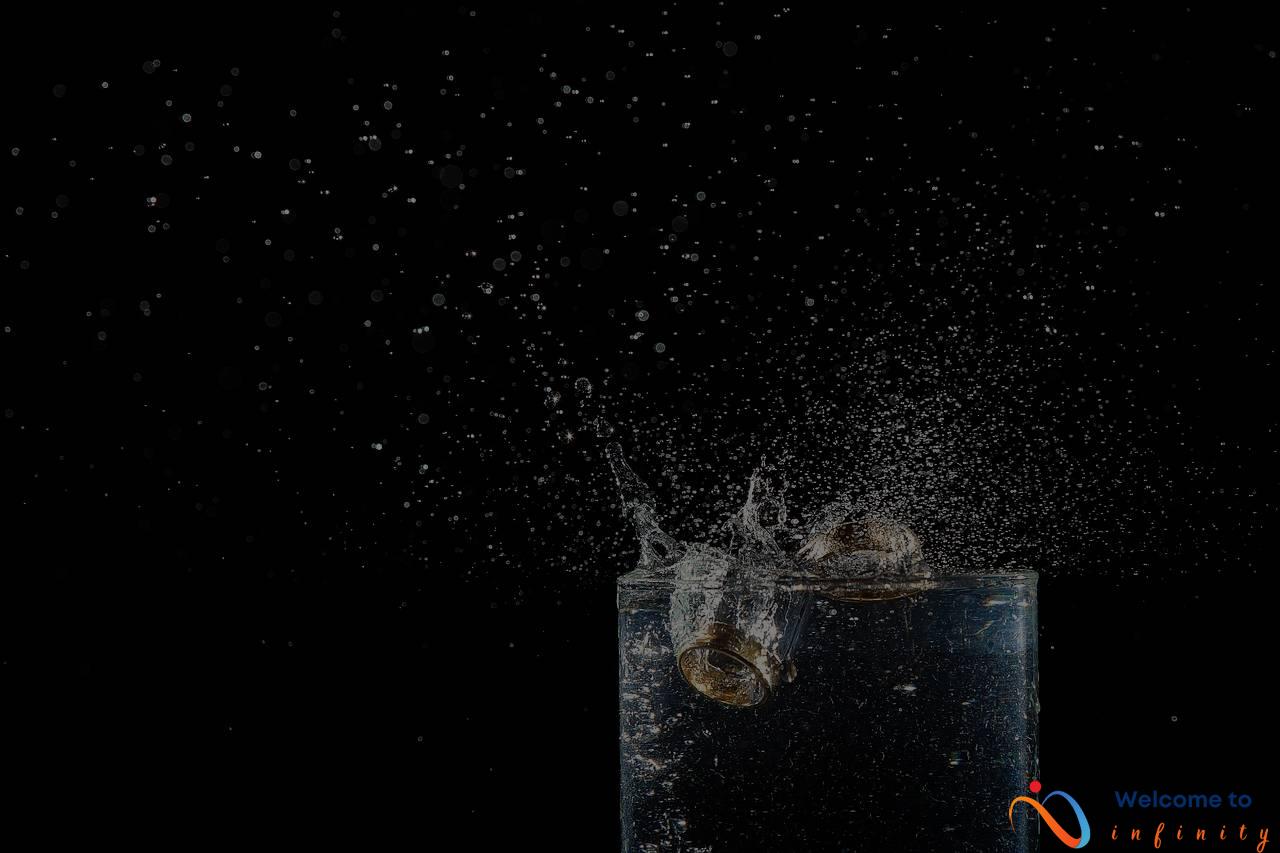Having beautiful skin is everyone's dream, and using skincare products with active ingredients such as acids can help achieve that goal. Glycolic acid is a popular ingredient in many skincare routines due to its ability to exfoliate dead skin cells and improve skin texture. However, other types of acids are also beneficial for the skin and can help address specific skin concerns.
So, what makes glycolic acid stand out from other types of acids? Glycolic acid is an alpha hydroxy acid (AHA) with a small molecular size that allows it to penetrate deeply into the skin. Its exfoliating properties make it effective at removing dead skin cells and improving the appearance of fine lines, wrinkles, and dark spots. Moreover, glycolic acid can also stimulate collagen production, resulting in a more youthful and radiant complexion.
But, glycolic acid is not the only acid that can offer benefits for the skin. There are other types of acids that can address specific skin concerns. For instance, salicylic acid is a beta hydroxy acid (BHA) that can penetrate deep into the pores to unclog them, making it ideal for those with oily or acne-prone skin. Lactic acid, on the other hand, is a gentler AHA that can help exfoliate dead skin cells and improve skin texture without causing irritation, making it a suitable option for those with sensitive skin.
When choosing which acid to use, it's essential to consider your skin type and specific concerns. Creating a skincare routine that suits your skin type can help you achieve your skincare goals and improve your skin's overall health and appearance.
In conclusion, finding the right acid for your skin type and specific concerns is essential to achieve beautiful and healthy skin. Whether you choose glycolic acid or other types of acids such as salicylic or lactic acid, incorporating active ingredients into your skincare routine can help you achieve your skincare goals and improve your skin's overall appearance and health.
What is Glycolic Acid?
Glycolic acid is a type of alpha hydroxy acid (AHA) that is commonly used in skincare products. It is derived from sugar cane, and its small molecular size allows it to penetrate deeply into the skin. This makes it effective at exfoliating the top layer of dead skin cells, revealing smoother and brighter skin.
Glycolic acid works by breaking down the bonds that hold dead skin cells together. This leads to improved skin texture, reduced appearance of fine lines and wrinkles, and a more even skin tone. It is also effective at stimulating collagen production, which can improve the firmness and elasticity of the skin.
It is important to note that glycolic acid can be irritating to some skin types, so it is best to start with a lower concentration and gradually increase to avoid any potential side effects. It is also important to use sunscreen when using glycolic acid products, as it can increase skin sensitivity to the sun.
- Glycolic acid is effective at exfoliating the top layer of dead skin cells.
- It can improve skin texture, reduce fine lines and wrinkles, and even out skin tone.
- Glycolic acid can be irritating to some skin types, so it is important to start with a lower concentration and use sunscreen when using products containing glycolic acid.
Other Types of Acids
Aside from glycolic acid, there are other types of acids that are commonly used in skincare. Salicylic acid, for instance, is a beta hydroxy acid (BHA) that is commonly used to treat acne-prone skin. It is oil-soluble, which means that it can penetrate deep into the pores to unclog them and prevent future breakouts. Salicylic acid is also known for its anti-inflammatory properties, making it effective at reducing redness and inflammation caused by acne.
Lactic acid, on the other hand, is another type of alpha hydroxy acid (AHA) that is gentler than glycolic acid. It is derived from milk and is particularly effective at exfoliating the top layer of dead skin cells, revealing brighter and smoother-looking skin. Lactic acid is also great for improving skin tone and reducing the appearance of hyperpigmentation.
Hyaluronic acid, meanwhile, is a type of humectant that is naturally found in the skin. It works by attracting and retaining moisture, making it a great ingredient for hydrating and plumping the skin. Hyaluronic acid is suitable for all skin types and can be used to boost hydration levels and improve overall skin texture.
When it comes to choosing the right acid for your skincare needs, it's important to consider your skin type and specific concerns. Salicylic acid is best for oily or acne-prone skin, while lactic acid is a great option for those with dry or sensitive skin. Hyaluronic acid is suitable for all skin types and can benefit those looking for a hydration boost.
- Salicylic acid benefits:
- Unclogs pores
- Prevents future breakouts
- Reduces inflammation
- Lactic acid benefits:
- Exfoliates dead skin cells
- Improves skin tone
- Reduces hyperpigmentation
- Hyaluronic acid benefits:
- Hydrates and plumps the skin
- Improves overall skin texture
Overall, incorporating the right type of acid into your skincare routine can help you achieve smoother, brighter, and healthier-looking skin. Consult with a skincare professional to determine which acid is best suited for your specific needs.
Salicylic Acid
Salicylic acid is a popular ingredient in acne treatments due to its ability to penetrate deep into the pores and unclog them. It is a beta hydroxy acid (BHA) which means it is oil-soluble and can effectively target acne-prone areas.
Salicylic acid works by exfoliating the skin and removing dead skin cells that can clog pores and cause breakouts. It also has anti-inflammatory properties which can help reduce redness and irritation associated with acne.
Salicylic acid is a great option for those with oily or acne-prone skin. It is commonly found in cleansers, toners, and spot treatments, and can be used as a preventative measure to stop future breakouts from occurring.
When using salicylic acid, it is important to monitor how your skin reacts and adjust usage accordingly. Overuse of salicylic acid can lead to dryness or irritation, so it is recommended to start with a lower concentration and gradually build up to higher strengths.
In summary, salicylic acid is a highly effective ingredient in treating acne-prone skin. Its oil-soluble properties make it an ideal choice for targeting oily areas and preventing future breakouts. However, it is important to use it in moderation and adjust usage based on the reaction of your skin.
Lactic Acid
If you have sensitive skin or are new to using AHAs, lactic acid may be a better option for you than glycolic acid. Lactic acid has a larger molecular size than glycolic acid, which means it doesn't penetrate the skin as deeply and is less likely to cause irritation. Additionally, lactic acid is naturally derived from milk, making it a great option for those who prefer to use natural skincare products.
Like glycolic acid, lactic acid works by exfoliating the top layer of dead skin cells, revealing smoother and brighter skin. However, because lactic acid is gentler, it may take longer to see results than with glycolic acid. Lactic acid also has hydrating properties, which can help to keep the skin moisturized.
If you're looking to incorporate lactic acid into your skincare routine, there are a variety of products available, including toners, serums, and peels. As with any new skincare product, it's important to do a patch test first to make sure your skin doesn't have a negative reaction.
- Benefits of lactic acid:
- Gentler than glycolic acid
- Derived from milk
- Exfoliates dead skin cells
- Hydrates the skin
If you have dry, sensitive, or mature skin, lactic acid may be the right choice for you. It's important to note that AHAs like lactic acid increase sun sensitivity, so be sure to wear sunscreen when using these products.
Hyaluronic Acid
=Hyaluronic acid is a natural substance found in the skin that plays a crucial role in maintaining hydration levels. It works as a humectant by attracting and retaining moisture, making it an excellent ingredient for hydrating and plumping the skin. As we age, our natural production of hyaluronic acid decreases, leading to drier and less supple skin. By incorporating products containing hyaluronic acid into your skincare routine, you can boost your skin's hydration levels and restore its youthful glow.
One of the benefits of hyaluronic acid is that it is suitable for all skin types. It is non-irritating and highly hydrating, making it a great ingredient for those with dry, sensitive, or combination skin. It can also be used in conjunction with other skincare ingredients to enhance their benefits. For example, combining hyaluronic acid with vitamin C can help to brighten and plump the skin.
When shopping for products containing hyaluronic acid, it's important to look for ones with a high concentration of the ingredient. Products with a low concentration may not be as effective at hydrating the skin. It's also important to choose products with a lightweight texture that can be easily absorbed by the skin. Hyaluronic acid is often found in serums, moisturizers, and sheet masks, but it can also be found in makeup products such as foundations and primers.
In summary, hyaluronic acid is a highly beneficial ingredient for achieving hydrated and plump skin. Its ability to attract and retain moisture makes it suitable for all skin types and it can be easily incorporated into your skincare routine. By choosing products with a high concentration of hyaluronic acid and lightweight textures, you can achieve smoother, brighter, and healthier-looking skin.
How to Choose the Right Acid for Your Skin
When it comes to choosing the right acid for your skin, it's important to consider your skin type and specific concerns. Salicylic acid is a great choice for those with oily or acne-prone skin as it can penetrate deep into the pores and unclog them to prevent future breakouts.
On the other hand, those with dry or sensitive skin may prefer lactic acid, which is gentler than glycolic acid and helps to exfoliate the top layer of dead skin cells, revealing brighter and smoother skin. It's also important to note that lactic acid can help to reduce the appearance of fine lines and wrinkles, making it a great choice for those looking to combat aging skin.
If you're looking to boost hydration levels, hyaluronic acid is an excellent choice. It's suitable for all skin types and works by attracting and retaining moisture in the skin, leaving it looking plump and youthful.
Overall, when choosing the right acid for your skin, it's important to consider what you're looking to achieve and select an acid that caters to your specific needs and concerns. By incorporating the right acid into your skincare routine, you can achieve smoother, brighter, and healthier-looking skin.
The Bottom Line
When it comes to choosing which acid to use for your skin, it's important to understand that each acid has its own unique benefits. While glycolic acid is a popular choice, it's not necessarily the best option for everyone. By considering your skin type and specific concerns, you can choose the right acid to achieve the best possible results.
For those with oily or acne-prone skin, salicylic acid may be the best option. Its oil-soluble nature allows it to penetrate deeply into the pores, helping to unclog them and prevent future breakouts. On the other hand, lactic acid is a gentler option that can work well for those with dry or sensitive skin. It helps to exfoliate the top layer of dead skin cells, revealing brighter and smoother skin.
Regardless of your skin type, hydration is important for healthy-looking skin. Hyaluronic acid is a type of humectant that naturally occurs in the skin. It attracts and retains moisture, making it a great ingredient for boosting hydration levels and plumping the skin. Using the right acid can lead to smoother, brighter, and healthier-looking skin.












